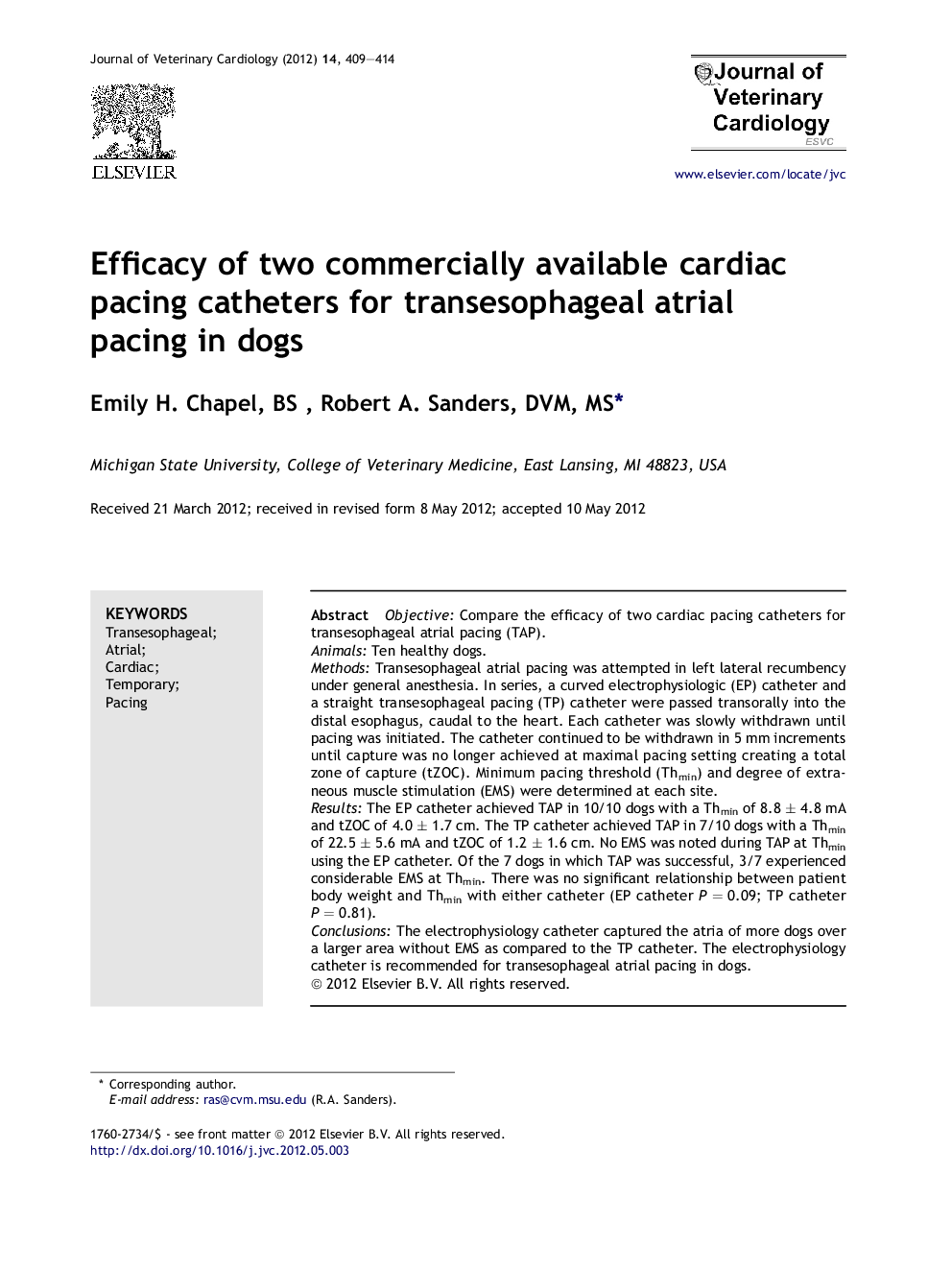| Article ID | Journal | Published Year | Pages | File Type |
|---|---|---|---|---|
| 2400191 | Journal of Veterinary Cardiology | 2012 | 6 Pages |
ObjectiveCompare the efficacy of two cardiac pacing catheters for transesophageal atrial pacing (TAP).AnimalsTen healthy dogs.MethodsTransesophageal atrial pacing was attempted in left lateral recumbency under general anesthesia. In series, a curved electrophysiologic (EP) catheter and a straight transesophageal pacing (TP) catheter were passed transorally into the distal esophagus, caudal to the heart. Each catheter was slowly withdrawn until pacing was initiated. The catheter continued to be withdrawn in 5 mm increments until capture was no longer achieved at maximal pacing setting creating a total zone of capture (tZOC). Minimum pacing threshold (Thmin) and degree of extraneous muscle stimulation (EMS) were determined at each site.ResultsThe EP catheter achieved TAP in 10/10 dogs with a Thmin of 8.8 ± 4.8 mA and tZOC of 4.0 ± 1.7 cm. The TP catheter achieved TAP in 7/10 dogs with a Thmin of 22.5 ± 5.6 mA and tZOC of 1.2 ± 1.6 cm. No EMS was noted during TAP at Thmin using the EP catheter. Of the 7 dogs in which TAP was successful, 3/7 experienced considerable EMS at Thmin. There was no significant relationship between patient body weight and Thmin with either catheter (EP catheter P = 0.09; TP catheter P = 0.81).ConclusionsThe electrophysiology catheter captured the atria of more dogs over a larger area without EMS as compared to the TP catheter. The electrophysiology catheter is recommended for transesophageal atrial pacing in dogs.
